Optimizing Cellular Data Performance
RVers and cruisers who need to keep connected wish for just a bit more range, better speeds, and increased reliability with their cellular data. Learning some tricks for optimizing cellular data performance can go a long way toward improving your online experience while on the go.
While it seems it should be as simple as getting as many bars as possible, it's usually not that easy.
One bar is bad, five bars are good - right?
Not when it comes to cellular data performance - it is not at all unusual for a one-bar signal in one location to outperform five in another.
Many variables can impact the cellular data performance you receive, and understanding them can help you optimize tweaks to your setup for the best data speeds and consistency.
If you're a member, please log in above to see your exclusive content.
Don't need a membership? Other ways you can support our work here:
-
As seen in our videos!
-
Get a FREE Month of Starlink!
And our team will get one too!
-
Get a FREE Month of T-Mobile Unlimited Data
Join the Calyx Institute, and get a bonus month - and we do too!
-
Save $20 on Visible
Verizon's prepaid phone plan, we also get a $20 credit.
-
Leave a Tip!
Send our team some beer money!!
-
Share About Us!
Link to our content, tell others about MIRC. It's Free!
It is with huge gratitude to our members for making the free unbiased educational content on our site possible. We're not sponsored, you'll find no 3rd party ads and we don't sell gear or data plans.
Our members get exclusive access to our in-depth content, classrooms, vendor discounts (that can save you more than membership!), alerts, insider info and interactive guidance. They can even book private advising sessions.
If mobile internet is an important part of your lifestyle, consider helping make MIRC possible by joining or supporting our mission.
Optimizing Cellular Data Performance Video Overview
Our quick video goes over the things that can impact cellular data speeds, reliability, and performance, and how you can go about optimizing your cellular data performance:
Things That Impact Cellular Data Performance
Whether you use smartphones, tablets, mobile hotspot devices, or cellular-embedded routers, your cellular data performance is influenced by several factors. Every location will have different challenges in optimizing your performance.
Some things may be out of your control, but understanding everything that could impact your signal in any given situation is helpful.
Signal Quality
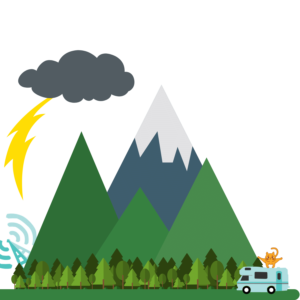 Cellular data is carried over long-range wireless signals, which can be affected by various factors between you and the tower.
Cellular data is carried over long-range wireless signals, which can be affected by various factors between you and the tower.
While the number of bars your device displays is not a direct indicator of the speeds you'll receive (we'll discuss this further below), it is a decent indicator of the overall strength of your signal.
If you have a strong signal, you stand a better chance of not only having a faster connection but also a more stable and reliable connection with fewer dropouts and variations.
Fortunately, there are steps you can take to optimize your cellular data by improving your signal.
These factors most directly impact the quality of your signal:
Distance
The strength of radio waves decreases with distance. Eventually, signals become too weak for receivers to distinguish them from the background signal clutter. Cellular signals typically have an effective range of up to 20 miles, depending on the transmitter's frequency and power.
Each cellular carrier utilizes different frequency bands to make up its network, ranging from low-band to super-high millimeter wave frequencies.
Lower-frequency bands generally have greater range but slower speeds, while higher-frequency bands have shorter range but higher speeds.

Generally, the further a wireless signal travels, the worse its performance becomes. Keep in mind that a cellular connection works both ways - your device must be able to hear the tower, but the tower must be able to hear your device.
The further you are from the tower, the weaker your signal gets - and thus, your performance declines. Antennas and, in some cases, signal boosters can help compensate.
Additionally, every cell tower also has a software-defined maximum range. If you exceed it, you will not be able to connect, regardless of signal strength.
Line of Sight And Obstructions
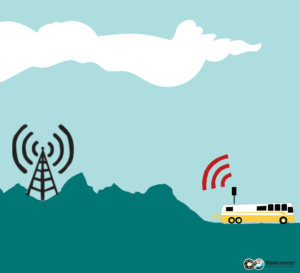
Nothing improves a wireless signal more than having nothing but air between the tower and the antenna you are using for your cellular device.
If you can visually see the cell tower, there is a good chance your cellular device can too.
An RVer or boater might mount an antenna at the top of a tall mast, surrounded by clear air, which helps overcome buildings and local terrain. However, if you go too high, you start to contend with signal loss over the cabling.
Many times, you can't see the tower, but in general, the fewer obstructions between you and the tower, the better to get that clear line of sight. Fortunately, cellular devices can pick up reflected signals, so a direct line of sight isn't necessary to get a connection.
Buildings, hills, trees, heavy rain, other RVs/boats, boulders, roof clutter, canyons, and local terrain can impact the signal you receive.
Metal blocks signal, too, so your own RV or boat's construction can work against you. RVs made of metal, such as Airstreams, buses, and vans, or steel trawlers, all present an extra challenge. Some window tinting, blinds, and insulation contain metal that can block signals.
This is what makes it important to put antennas where they won't have these hindrances. At the very least, placing your devices or antennas near a window (without metal content) can help significantly, or even better, above the clutter of local area obstructions.
For more on optimizing cellular data when metal structures are an issue, check out our guide:
Metal RV, Van, and Boat Considerations
Interference
Wireless connections are susceptible to interference from other devices operating on the same frequency bands. While cellular standards and government regulations controlling who can use the airwaves help significantly, the potential for interference still exists.
If you've ever tuned to an FM radio station and heard two stations simultaneously, that is an analogous example. With cellular signals, the noisier it is, the harder it is for your device's voice to be heard.
Wireless signal noise can originate from other cellular devices or background noise from other sources.
The Cellular Modem
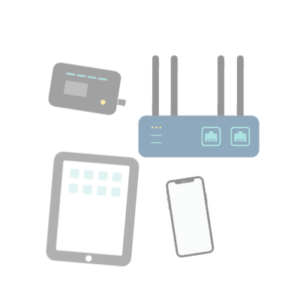 Cellular technology advances rapidly as carriers strive to compete with one another and meet customer demand.
Cellular technology advances rapidly as carriers strive to compete with one another and meet customer demand.
This means they constantly deploy more advanced technology, including more capable cellular towers, utilizing different frequency bands for which they've purchased spectrum, and adding support for more advanced cellular features that enable them to deliver increased capacity.
Since cellular connections are two-way, the level of technology at both ends matters significantly for performance. The carriers upgrade their towers to improve capabilities on their end, which the individual can't control. The part you can control is getting devices with modern, advanced modems. The modem inside your cellular device is critical in determining the actual cellular data performance that your carrier offers.
For example, consider this analogy: A new highway is built that can handle a lot of high-speed traffic and fast cars. This is your cell carrier upgrading or building a new cell tower. However, this new highway, which can handle a large number of cars traveling at high speeds, doesn't benefit you if you're driving an old Model T. You'll need a new car to fully take advantage.
The modem in your cellular device operates in a similar manner. If it's an old modem built on old technology, it can't take advantage of the performance available on modern cellular networks. Having a more modern modem in your device can result in faster speeds and improved coverage. Having an older modem puts you in the slow lane and may even cause you to miss out on parts of a carrier's coverage map.
It's worthwhile to evaluate your cellular gear every year or two to see if it's time to update your equipment. It can make a huge improvement.
Understanding Cellular Modem Specifications
Data Plans
Data plans come in various options with different features and limitations. Even an 'unlimited' plan has limits.
You'll find limitations on mobile hotspot use at high speed, video resolution throttling, and network management terms all built into your data plans. Be sure to read the terms and understand how these might impact your usage.
Optimizing a better cellular signal will not improve your data connection if your data plan intentionally provides throttles performance.
On many plans, you receive a certain amount of high-speed data, but once you've reached the high-speed data cap, you are throttled to slow speeds for the remainder of your billing cycle. Many plans also include "deprioritization," which means you are slowed down (or deprioritized) behind other users when the network gets congested. Think of this like being put in the slow lane, while other drivers can use the fast HOV lanes.
Select your data plans carefully and understand the terms of service to ensure they meet your needs.
Network Congestion
If more people are using cellular devices in a particular area than the local tower can handle, then things slow down for everyone.
This is called network congestion, and it's like rush hour traffic on roadways.
Wireless signals can only carry a limited amount of data and support a limited number of connections simultaneously. In any given area, carriers may have only a limited amount of internet capacity due to the available throughput and the wireless spectrum they own in that area.
This is why all carriers have network management policies, allowing them to balance the demands of their customers and prioritize data usage on their network. If your plan is subject to network management deprioritization, you will be placed at a lower or even the lowest priority during these times.
However, even without deprioritization, congestion slows down everything for everyone, just as rush-hour traffic on the roads does.
Unfortunately, your options for dealing with network congestion are limited. You can plan your high-traffic, high-speed needs during non-peak times and consider the potential for network congestion when traveling to popular areas of the country that experience temporary, seasonal population spikes. You can subscribe to a premium plan that provides priority data access. You can have plans for multiple carriers - if one carrier is congested, another one may not be. You can use non-cellular internet connections, such as public Wi-Fi or satellite.
Your Network And System
Sometimes, it's not the cellular performance itself that's slowing you down, but rather issues with your own system and your local area network (LAN). Wi-Fi, in particular, can be finicky and impacted by wireless interference. Congestion due to other Wi-Fi signals in an area, such as a crowded RV park or even microwave ovens, can impact the performance between your router or hotspot and your devices.
Your devices also have limitations and can process and route only a certain amount of data and a limited number of connections simultaneously. Especially in an era of fast 5G cellular connections, many older Wi-Fi and network devices, such as routers, can only process a fraction of a fast connection.
Optimizing your local area network for less congested Wi-Fi channels or even switching to a hardwired Ethernet connection can help you realize the full potential of your cellular data connection. Additionally, consider upgrading older gear, especially routers, to more modern devices that can handle faster connections.
Cellular Booster vs Antennas?
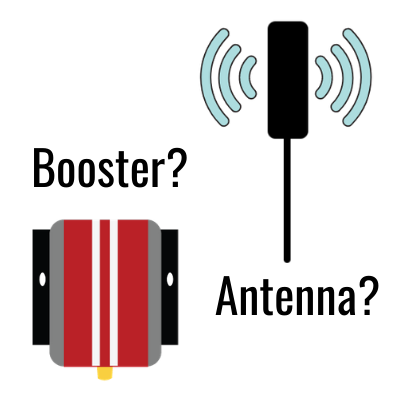 Before we delve into the details of optimizing your cellular performance, we're often asked a basic question: Are boosters or antennas better for enhancing your cellular data performance?
Before we delve into the details of optimizing your cellular performance, we're often asked a basic question: Are boosters or antennas better for enhancing your cellular data performance?
In our extensive field testing over the years, external antennas - especially MIMO antennas - outperform cellular boosters about 90% of the time
But it really comes down to the gear you're using for your cellular data access, as not all devices have antenna ports to utilize external antennas. Some mobile hotspots and cellular-embedded routers offer the option to use external antennas, whereas smartphones and tablets typically don't.
Boosters can also have a greater impact by helping to establish connections to a very distant tower, as well as improving upload speeds (which are essential for video broadcasting and uploading large files).
We have separate guides going over the advantages of each approach, but here is a quick decision tree that might help you narrow in on what is the right choice for you:
Also, here's a quick video overview of MIMO Antennas vs. Boosters:
Learn More about Boosters & Antennas:
Mobile Cellular Boosters Cellular Antennas
Regardless of the signal-enhancing tools you're using (assuming you're using any), there is still a lot to understand about optimizing your signal to achieve the best cellular data performance possible.
Evaluating Cellular Data Performance
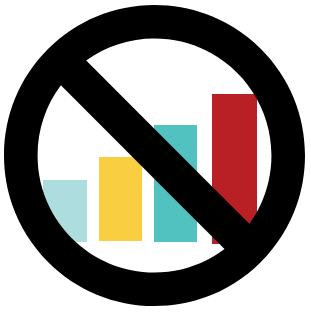 While it may be tempting to rely on the bars your device displays for signal strength to gauge how your cellular data optimization efforts are progressing, these bars are relatively meaningless.
While it may be tempting to rely on the bars your device displays for signal strength to gauge how your cellular data optimization efforts are progressing, these bars are relatively meaningless.
What really matters is that you have enough speed and reliability to accomplish what you need to do online.
Bars vs Speed
Bars on your device don't show your actual cellular data performance. They serve as an easy-to-understand visual indicator of relative signal strength. However, each device manufacturer uses its own formulas to determine what kind of signal equates to 1 bar versus 4 bars. So, a device from one company may show three bars while a device from another company may show two or four bars.
Signal strength, however, is just one factor in determining cellular performance, which means that bars on your device usually have little correlation to how fast your connection will be.
Data speed, reliability, and consistency are what really matter when considering a mobile internet connection.
So, if bars aren't a reliable indicator of data performance, what is?
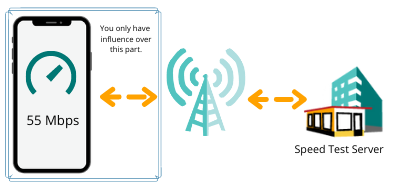
The best indicator of data performance is to measure your actual data performance.
And the best quantitative measurement of this is your actual download and upload speeds.
Then, you can do additional measurements with antennas or boosters to see if your cellular data optimization efforts are having an impact.
To learn more about testing your data speeds and also understand other aspects like raw signal strength, signal-noise ratio, speed benchmarks for online activities, and latency, head on over to our companion guide:
Testing Your Mobile Internet Speeds Guide
Reliability Over Speed
While there's a lot of focus on super-fast speeds when discussing data performance, reliability and consistency are just as important. At some point, more speed really doesn't buy you anything.
However, an inconsistent connection that frequently drops out or is fast but then slows to a crawl periodically can ruin your online experience. It can disrupt video calls and interrupt file transfers. It causes a video on Netflix to buffer or your timeline on Facebook to stutter.
A significant part of optimizing cellular data performance shouldn't focus solely on speeds, but rather on achieving more reliable uptime to minimize disruptions. There are multiple approaches to this, ranging from optimizing your signal strength to building redundancy through multiple connections that can take over when another fails.
Testing for reliability is much more difficult than testing for speed, as it's generally something you'd only notice over time. Such as when your connection drops out right in the middle of a critical video call or just before the cliffhanger moment in a movie.
Member Exclusive Content Below
Member Exclusive Content In This Guide
Has this guide been helpful so far?
Well.. there's a lot more below available to our members. As well as dozens of other guides like this, videos, classrooms, forums, webinars and more. All specifically created for helping keep RVers, cruisers and nomads online.
Consider Becoming a Member
If mobile internet is an important part of your lifestyle, a membership can help keep you connected with these exclusive benefits:
- in-depth exclusive content
- interactive guidance
- vendor discounts
- alerts & insider tips
- classroom
- community
Free Content Like This Made Possible By Our Members!
We are community funded via our premium membership program - allowing us to focus on creating unbiased quality, in-depth, constantly updated content. We don't accept 3rd party advertising, we're not sponsored and we don't sell 'stuff'.
Already a member?
Log in to continue with this guide.
Check out the Topics Covered in the Member Section:
Frequency Bands Explained
Each carrier's cellular network uses various and often carrier-specific wireless frequency bands. If you want access to a carrier’s entire network, it's helpful to understand the frequency bands the carrier supports, allowing you to select the right signal-enhancing gear.
Hidden Multipliers: MIMO & Carrier Aggregation
Understanding these core cellular technologies will help you select gear to optimize cellular data performance.
Strategies For Signal & Performance Enhancing
Building on the previous sections, this section covers specific strategies for enhancing cellular data performance, ranging from the straightforward to the more complex. It also provides specific advice for optimizing upload speeds, which is particularly important for those handling large file uploads and live video broadcasting or conferencing.
Booster & Antenna Considerations
This section continues the theme, delving deeper into how cellular boosters and antennas can either enhance or compromise cellular data performance. For example, the costs and benefits of using 2x2 MIMO in a 4x4 MIMO world, tips for utilizing directional antennas, and finding cell towers.
Bonding, Load Balancing & Auto Failover
Some routers on the market offer even more tools to help you optimize your data performance. This section covers concepts like band locking, bonding, and load balancing.
Band Locking & Selection
Some devices allow you to turn specific cellular bands on and off. This section covers this feature and provides tips on how to use it to improve your connection and performance.
Network Modes - LTE & 5G
LTE and 5G currently coexist, but they are not equal in terms of capacity and performance at every location. This section has tips and tricks for choosing when it might be the right choice to force your device to use one or the other.
Dealing With Network Congestion
When the cellular towers at your current location are experiencing high traffic, your data performance can suffer. This section covers what you can (and can't) do to get around this.
Troubleshooting Guidelines
Getting poor cellular data performance? This section guides you through identifying potential issues and suggests strategies for addressing them.
Conclusion: Analyze Before You Optimize
There are a few different options for optimizing cellular data performance, but before you know how to proceed, you need to be aware of things that could affect your current performance.
Line of sight to towers, distance, technology supported by your equipment, network congestion, and data plan restrictions are just a few of the things that could have an effect.
There are easy solutions, like moving your equipment or using an indoor antenna, or more advanced solutions, like a directly wired antenna, cellular booster, bonding, or band locking.
And sometimes.. there's just no solution to getting better speeds at your current location, and you either need to move or find something else to do.
Cellular boosters can be quite useful for boosting the signal to a smartphone to get a more solid phone call. But when it comes to enhancing cellular data performance, things get more complicated.
Because of a technology called MIMO (multiple in multiple out) that is essential to LTE and 5G data, often times the internal antennas on a smartphone or hotspot don't benefit from an amplified signal. Boosters also only cover a handful of the frequency bands the carries use for data.
But a booster can play a role in a mobile internet arsenal - as they excel during times when you are really far from a tower, or where upload speeds are important (such as video broadcasting).
For more on understanding boosters vs. MIMO - check out video:
For more on signal enhancing, including understanding boosters and the many forms they come in - follow up with our guides:
Explore the Resource Center
Have Questions?
Join our 'Library Desk':
Internet for RVers & Cruisers Facebook Group
We cross post news articles and guides, and can help point you in the right direction to our content here on the resource center.
It is with gratitude to our premium members that we're able to offer our free content - and for that, they also have access to our member Q&A areas for more in-depth guidance.
Become a Member
 The MIA is our premium membership - designed for those who consider mobile internet an important part of their lifestyle.
The MIA is our premium membership - designed for those who consider mobile internet an important part of their lifestyle.
In thanks for making content like this possible, we offer a bunch of additional perks. From interactive guidance, in-depth member exclusive content, discounts, alerts, classroom and ability to book private advising sessions.
Stay In the Know
We're constantly tracking the industry and analyzing new developments for mobile travelers. If you'd like to receive updates, we offer several ways:
- Subscribe to our free monthly newsletter
- Subscribe to our News Stories RSS Feed
- Subscribe to our YouTube Channel
- Follow our Facebook Page
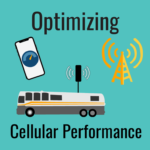
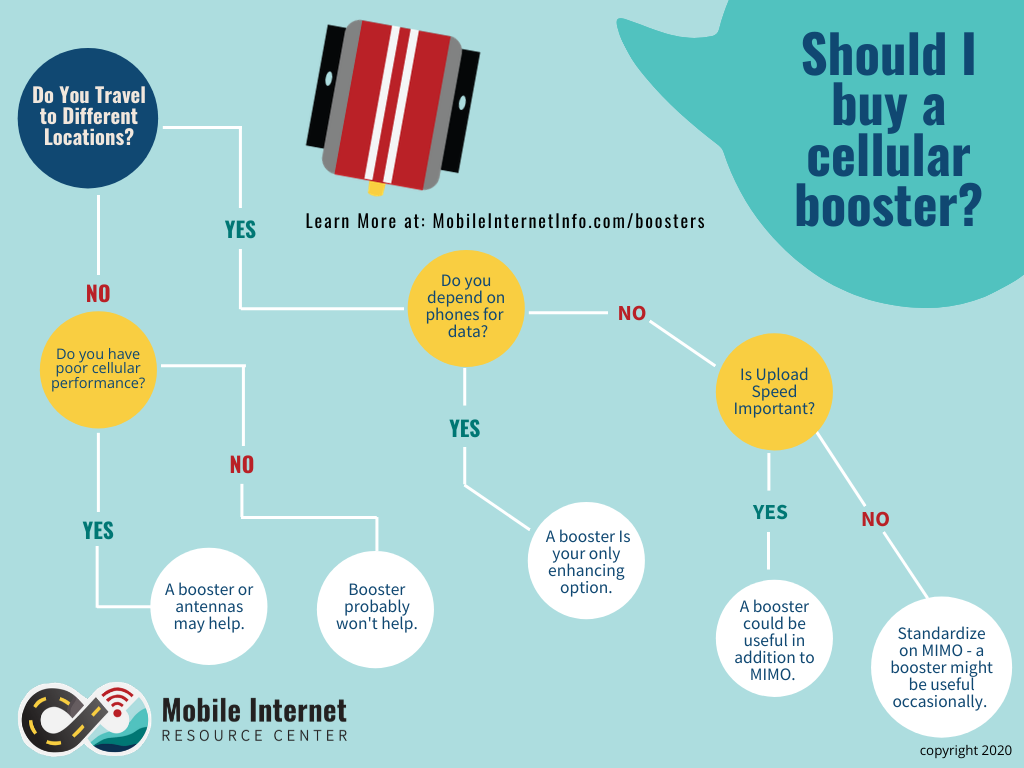

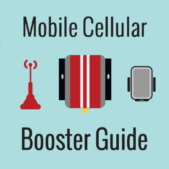
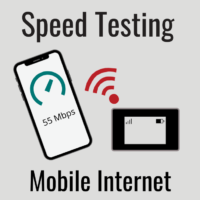
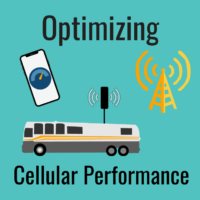
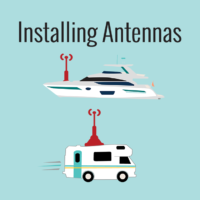
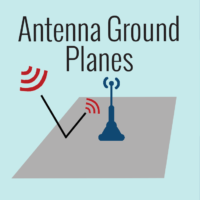
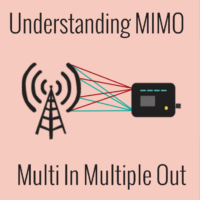
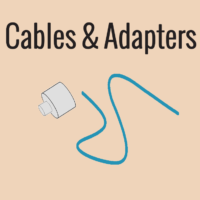
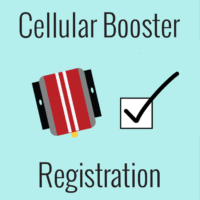
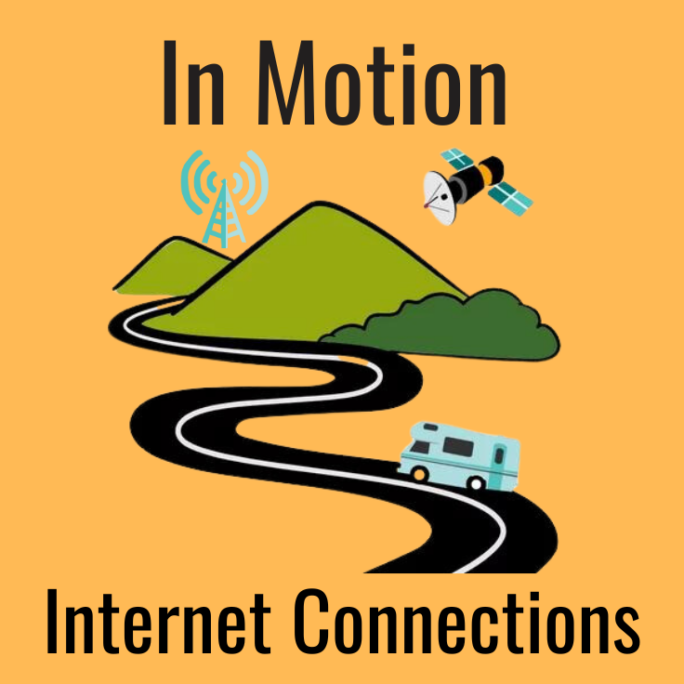
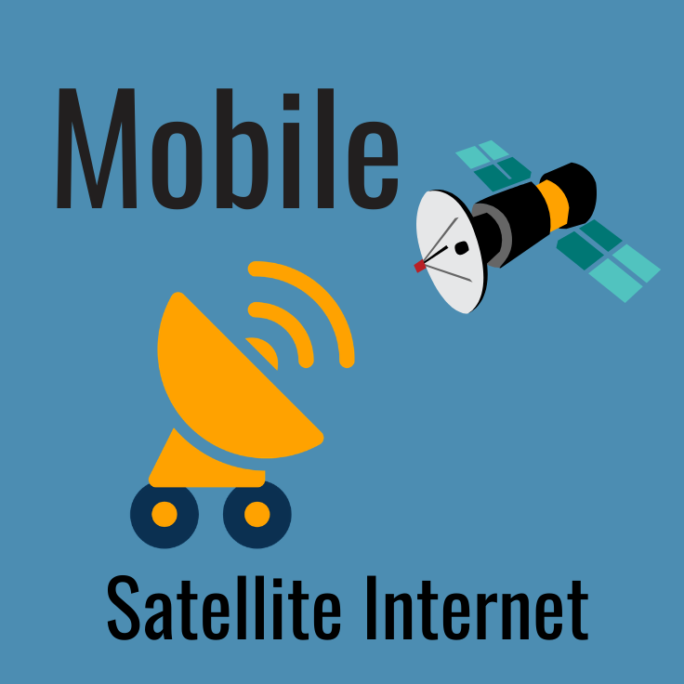
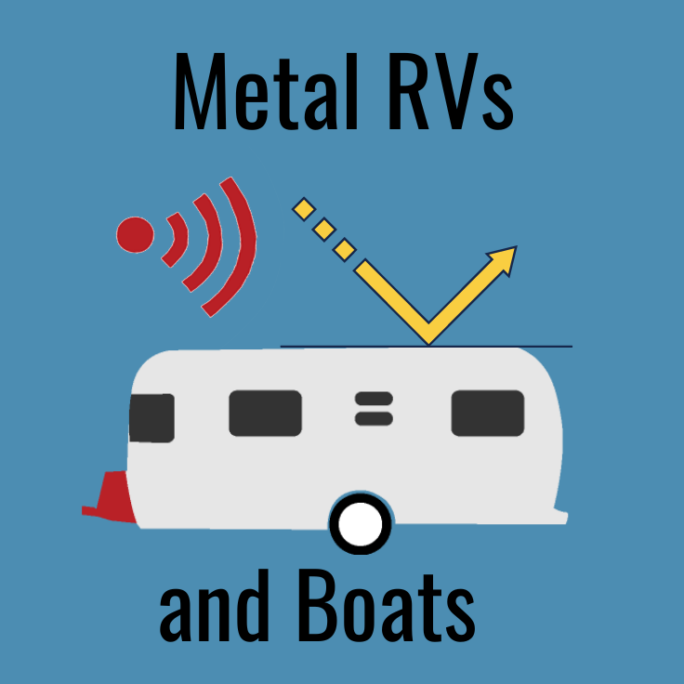
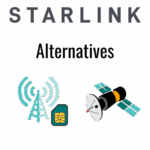
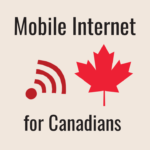



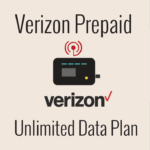
 Mobile Internet Resource Center (dba Two Steps Beyond LLC) is founded by Chris & Cherie of
Mobile Internet Resource Center (dba Two Steps Beyond LLC) is founded by Chris & Cherie of